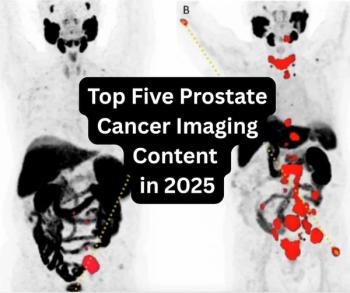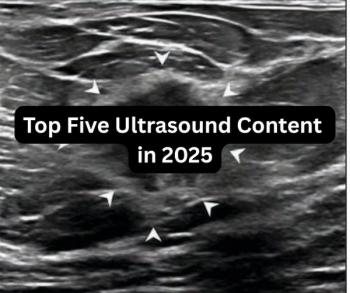
Current and Emerging Legislative Priorities for Radiology in 2025
In a recent interview, Amy Patel, M.D., discussed key points of emphasis for legislative advocacy in radiology, including long-term reform in Medicare reimbursement, improved coverage of breast cancer screening and mitigation of the ongoing radiology workforce shortage.
The challenges in radiology are particularly daunting, ranging from severe workforce shortages to five straight years of cuts in the Medicare Physician Fee Schedule. In a recent interview, Amy Patel, M.D., discussed the impact of continued reimbursement cuts in closing practices and reduced access to health care for patients in rural communities.
The continuing battle for Medicare reform remains a key legislative priority for radiologists in 2025, emphasized Dr. Patel, the chair of the American College of Radiology’s Radiology Advocacy Network
“This affects all of us in the house of medicine, and certainly in radiology, whether (you’re in) academics or private practice, the alarm bells should be sounding off for all of us. We need to really come together and advocate for long-term Medicare reform, and that is what we'll continue to do this legislative session,” maintained Dr. Patel, the medical director of the Liberty Hospital Breast Care Center in Kansas City.
In addition to Medicare reform, Dr. Patel said the radiology profession will continue to advocate for the Resident Physician Shortage Reduction Act as well as breast imaging legislation such as the Find It Early Act and the Access to Breast Cancer Diagnosis (ABCD) Act.
Dr. Patel remains enthusiastic, noting the development of strong radiology advocates on both sides of the aisle in Congress. She also pointed out recent wins with diagnostic breast imaging legislation in Missouri, Iowa, Vermont, and pending legislation in New Hampshire.
However, expressing concern about a recently introduced bill in Texas that would allow image interpretation by mid-level providers, Dr. Patel emphasized the need for increased vigilance and more radiologists to propel the legislative agenda for radiology.
“We have these immense issues that we're facing in an increasingly more competitive health-care environment, and we'd love for radiologists, radiation oncologists to join us, maybe those who have never joined us before, because it's definitely going to take all of us as we tackle all of these challenges,” emphasized Dr. Patel.
For more insights from Dr. Patel, watch the video below.
Newsletter
Stay at the forefront of radiology with the Diagnostic Imaging newsletter, delivering the latest news, clinical insights, and imaging advancements for today’s radiologists.




























